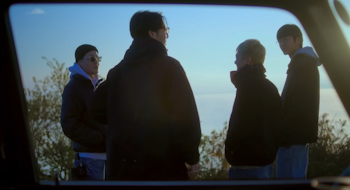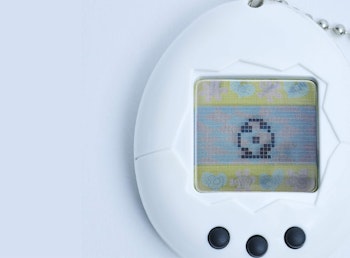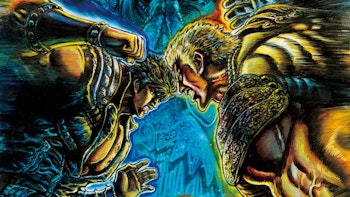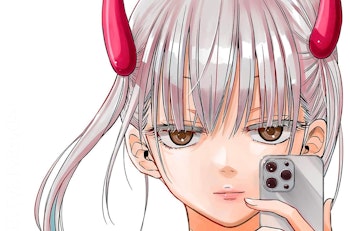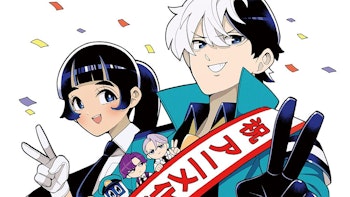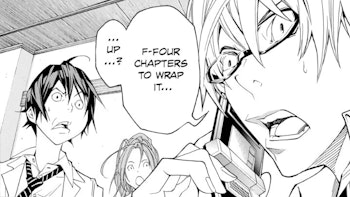
When you picture the protagonist of a shonen manga in your mind, chances are you don’t think of a sad, whiny loser. Most people conjure up a heroic figure with a big heart and lots of charisma instead, usually around high school age or younger. That’s the lingering effect of One Piece and Naruto, at least, but Weekly Shonen Jump’s latest trend is almost the polar opposite: main characters who are completely pathetic.
This trend arguably started back when Kouta Kawae first launched Nue’s Exorcist in the pages of the magazine in May 2023. Among other things, this exorcist action manga opens with a scene of protagonist Gakurou Yajima offering to go and buy lunch for a group of bullies in place of his classmate Zenno. He even prepares to take a punch from one of them later on, before an evil spirit crashes through the ceiling and a battle begins.
You could argue that Gakurou actually demonstrates a fair bit of courage here: he’s willing to sacrifice his own wellbeing for the sake of his peers, after all, as well as turn the other cheek to prevent further violence. Nevertheless, the entirety of Nue’s Exorcist is centered around Gakurou’s journey from a self-professed “coward” to someone with enough strength to protect those he cares about. Of course, many characters go from weak to powerful in shonen manga, but rarely does it start from such a low level.
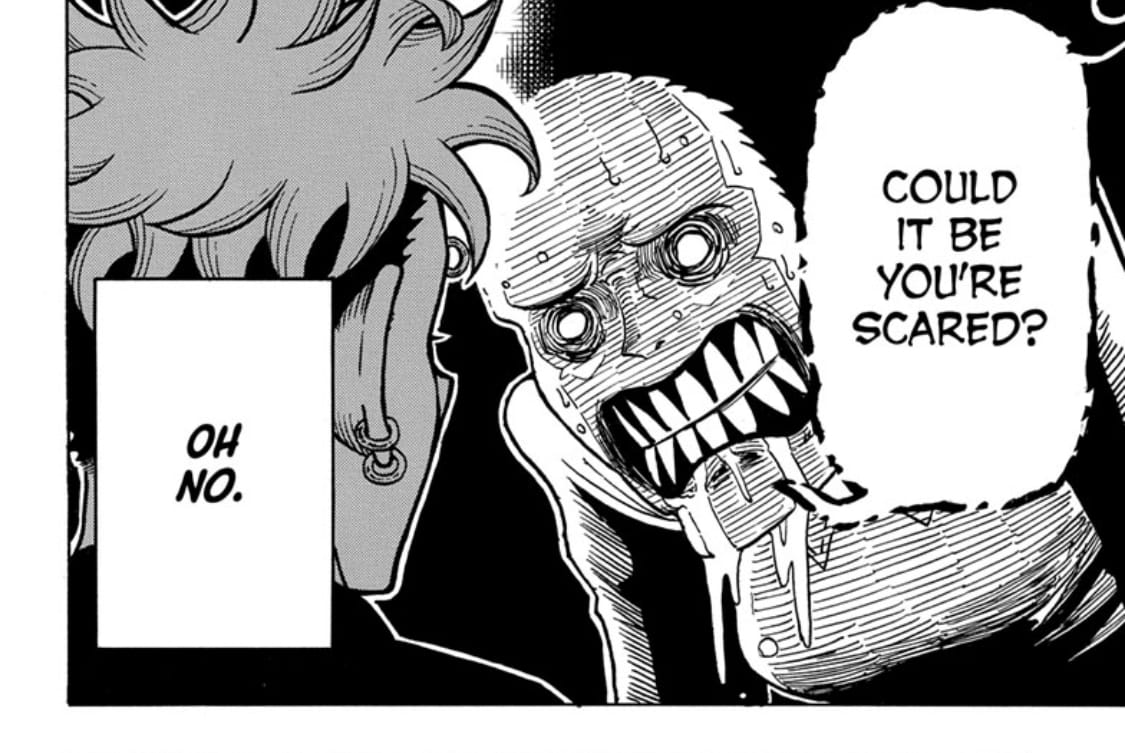
Similar character profiles can be found in two other series that launched the following year in the same month of June 2024, albeit with one key difference. While Gakurou is both powerless and a coward at the start of Nue’s Exorcist, the titular Kiyoshi in Ultimate Exorcist Kiyoshi is incredibly powerful but somehow scared of the very thing he’s supposed to be fighting. The same goes for Kuin in Yokai Buster Murakami: he’s deathly afraid of yokai, leaving his deadpan friend Murakami to pick up the slack.
Bucking this trend somewhat is Chojo from Super Psychic Policeman Chojo. This is because he’s neither weak nor cowardly, but for whatever he has over Kiyoshi et al., he more than makes up for with a complete lack of morality and self-awareness. Launched in February 2024, the main character of Shun Numa’s comedy series is as the title suggests: a wielder of psychic powers and a policeman in the fictional area of West Chinjuku. He’s also rude, lazy, selfish, and enjoys beating small children in card games far too much for a grown adult.
In this sense, Yodaka from Shinobi Undercover is perhaps a more obvious variation on this theme. Much like Kiyoshi and Kuin, he’s regarded as one of the best ninja in Japan, but he absolutely sucks at social interaction: the comedy of this series then comes in purposefully giving such a character a mission that requires constant engagement with the secondary protagonist, Aoi. To make matters worse, all of the other ninja on the mission get along with Aoi just fine, only making it even funnier.
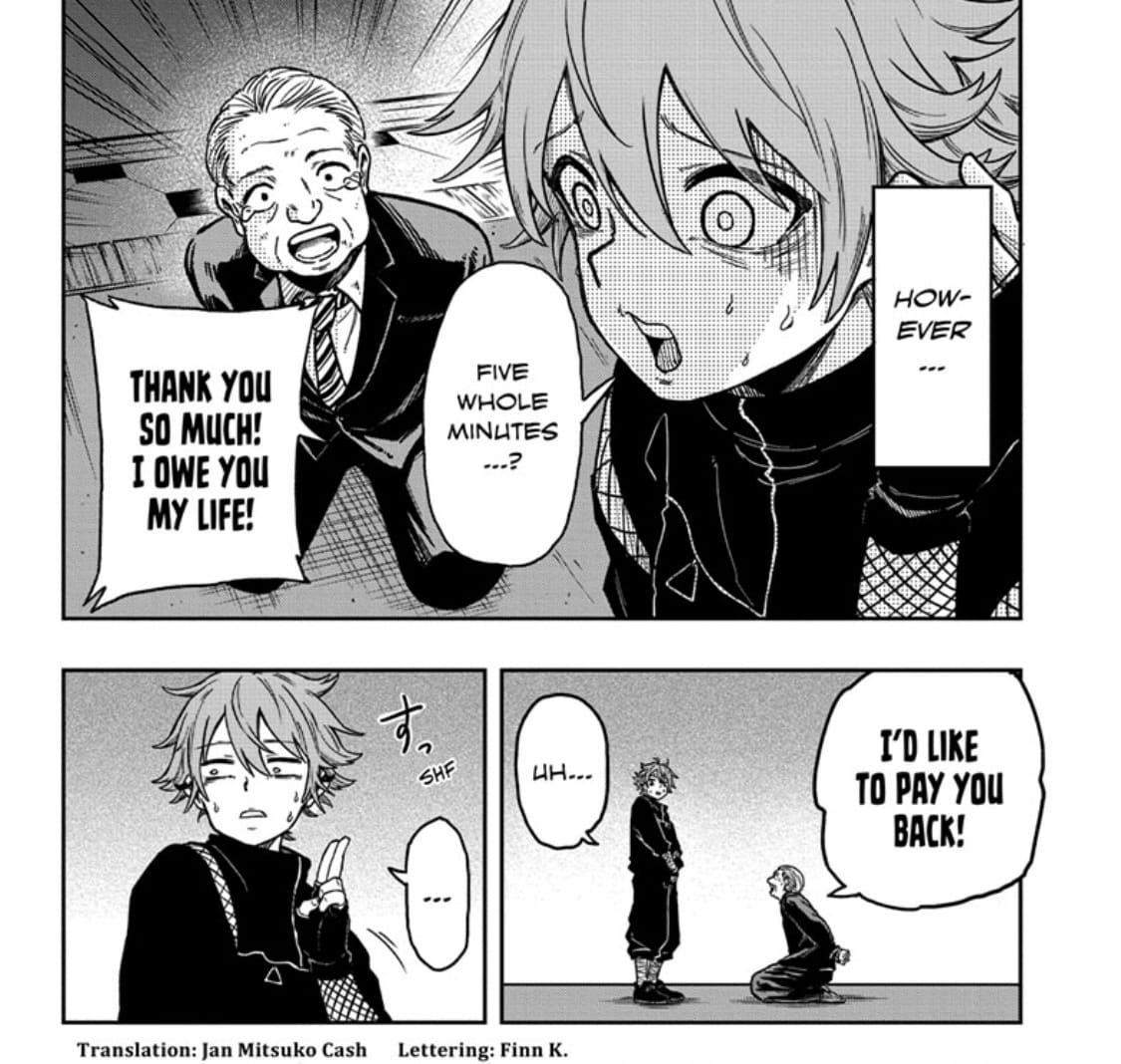
Given that Shinobi Undercover launched in September 2024, that makes no less than four series debuted in Jump this year alone with similar protagonists. This begs an obvious question: why? Why has the Weekly Shonen Jump editorial department decided to debut so many series with similar features together in such a short space of time? In many ways, it all comes back to that dirty word: money.
At the end of the day, the magazine is ultimately intended as a vehicle for profit. If a series doesn’t sell a lot of manga volumes and other kinds of merchandise, then it’s simply not worth publishing from a business point of view. Long-time readers of Jump will be more than aware that the magazine is actually a lot more strict than other publications when it comes to this rule: for every hit, there’s at least a dozen others that were cut down before their time. The kind of numbers that a series also has to hit to avoid cancellation is also relatively high, usually standing at around 20,000 copies for the first volume, although other factors do come into play from time to time.
In terms of how editors determine how likely a series is to sell, they obviously look at wider industry trends to see what kind of stories and characters readers are responding to. Even so, since Weekly Shonen Jump leads the industry in so many ways, success stories within the magazine itself also tend to have a large effect on the line-up. This is how we got a dozen series featuring exorcists fighting demons with swords after Demon Slayer: Kimetsu no Yaiba blew up in 2020: you can pretty much always trace the trends back to a singular source.
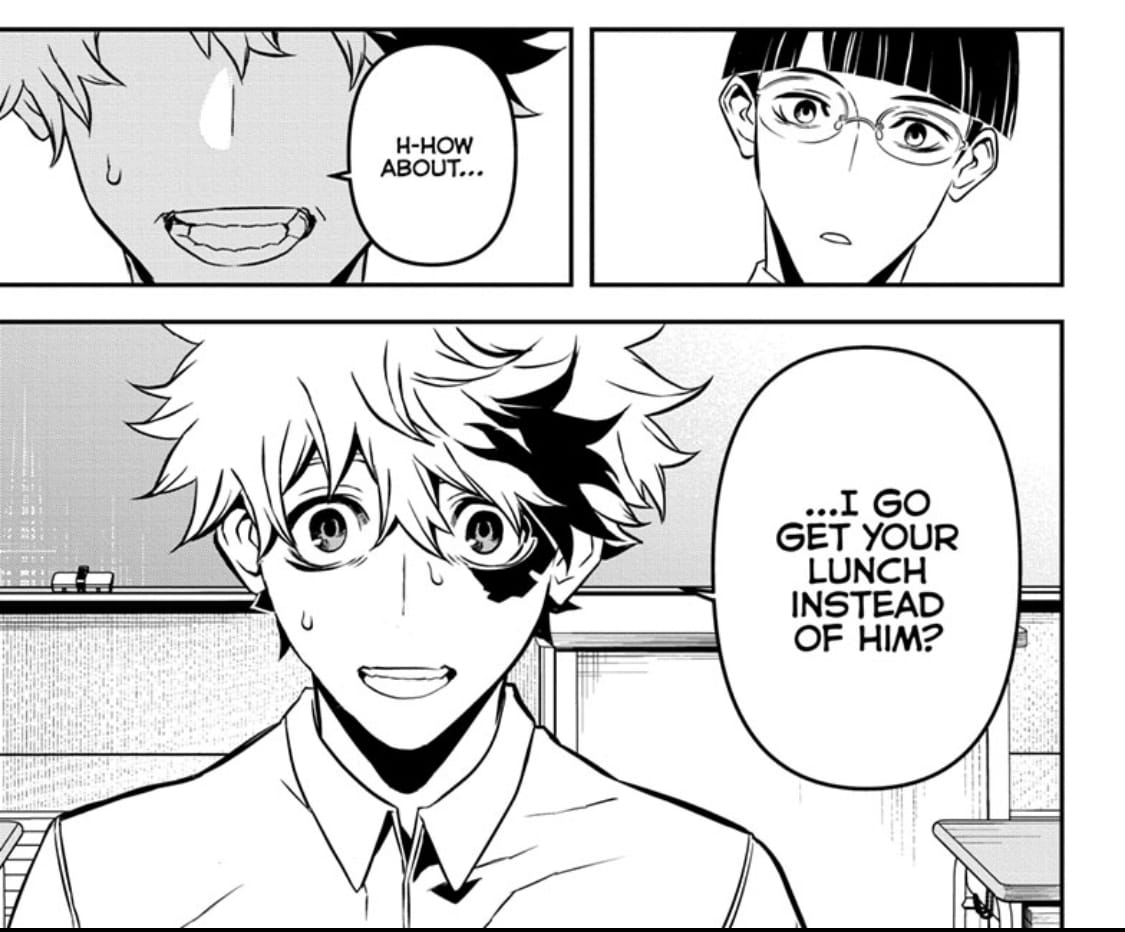
With this in mind, the timeline presented above seems to suggest that Nue’s Exorcist provided the initial impetus for more pathetic characters. It came first, after all, but the data we can see seems to suggest that Nue’s success is pretty limited: Shueisha has yet to release any numbers regarding the number of copies in circulation, and it actually came behind Super Psychic Policeman Chojo in the 2024 Next Manga Awards. Although it might have a dedicated fanbase that buys each new volume every time, the Shoseki estimations don’t point towards a massive breakout into the mainstream and certainly aren’t enough to motivate such an obvious editorial trend.
As a result, Chainsaw Man feels like a more plausible answer. Tatsuki Fujimoto’s award-winning series ran in Weekly Shonen Jump from December 2018 to December 2020 and features a protagonist very similar to the ones introduced thus far: crude, cowardly, selfish, and motivated entirely by base desires. What’s more, Chainsaw Man struck a definite chord among young people and Generation Z for a variety of reasons to the tune of 28 million copies in circulation, which certainly seems like more than enough for the editors to try and make lightning strike twice.
Whether or not they will succeed remains to be seen. For now, at least, the features of Weekly Shonen Jump’s latest trend and where it may have come from should be a little bit more obvious. Keep this in mind next time you think to yourself why so many series in the magazine feel so similar, as well as always remember that any random feature could be up next on the chopping block to be replicated.
What’s that, a series led by a protagonist with tattoos is selling well? Just give us a moment…



